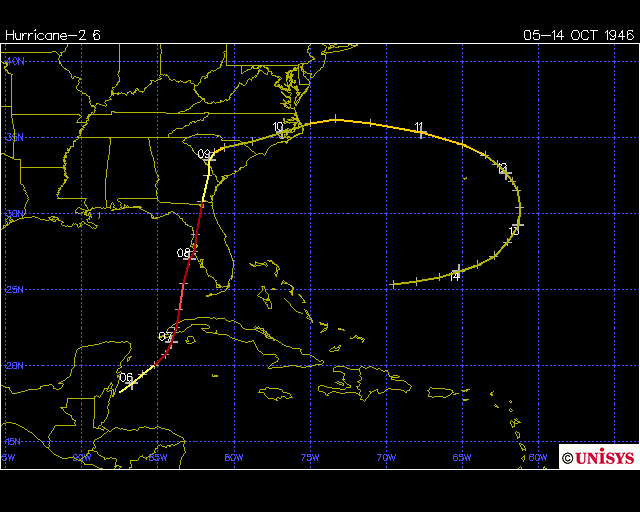
(Unisys)
On October 8, 1946, a minimal hurricane stuck the Tampa Bay area. It was the last recorded hurricane strike in that area.
The storm was first formed at the end of a cold front in the western Caribbean Sea, near British Honduras, on the evening of Oct. 5th. It moved northeastward and organized into a hurricane before hitting the western tip of Cuba on Oct. 7th with 90 miles per hour (145 km/hr) winds. It strengthened further as it moved near the Dry Tortugas but began to weaken as it moved toward Florida’s west coast. By the time it made landfall in Bradenton on the morning of Oct. 8th, the winds were down to 85 mph (137 km/hr). But it did manage to spin up a tornado in the city of Tampa.
It moved quickly over northern Florida, causing crop damage, and became a tropical storm as it traveled over Georgia and South Carolina. It became extratropical at this point, and moved out over the Atlantic. Although a weakening system, it persisted for five days and recurved back toward Florida before dissipating. Over its course, the hurricane was responsible for 5 deaths and over US$5 million in damage.